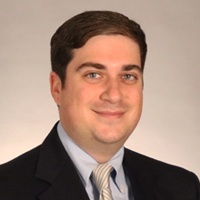Private, Religious Schools Have Strong Showing at Science Fair
As an alumnus of private Catholic schools, I continually am surprised by the evolving notion that religious schools are dismissive of science. Indeed, much is being made about private school teachings that are deemed incompatible with science. But as a recent personal experience of my own shows, this generalization is taken oftentimes on faith.
Indeed, kids in private religious schools not only are learning about the scientific method, but many are excelling in the Science, Technology, Engineering, and Medical (STEM) fields as well. Just one example has been private schools’ showing at the Hoosier Science and Engineering Fair (HSEF) in Indiana, home to the nation’s largest school voucher program.
More than 70 students from around Indiana competed at the HSEF and, of those, 26 were chosen to represent their state at the International Science and Engineering Fair (ISEF). Of those initial 70, half were from private schools of choice—an impressive showing for schools that are considered by Heather Weaver, an ACLU senior staff attorney, “to discriminate and indoctrinate.”
For many Catholics, science and religion are not incompatible. A Catholic school that includes instruction in faith can fulfill both its missions: Serve a higher power and provide students with a well-rounded education.
For example, to show just how wrong critics such as Weaver can be, consider the students from the Eman School in Fishers, Indiana—a private school that accepts voucher students “offer[ing] (them) an Islamic environment that promotes moral and ethical values that are part of Islamic teachings.” The Eman School’s students make up the largest delegation of Hoosier students at the ISEF. In addition, three of the four students from the Eman School’s delegation are female, which is notable considering women make up only 24 percent of all STEM degree holders nationwide. In fact, Iman Mahoui, earned second place in Cellular/Molecular Biology, the highest award from anyone in the Hoosier delegation. Just by talking to these students, one can see that an appreciation for the scientific method was instilled in them from the earliest grade levels. The school views science not in isolation, but as a tool for understanding the natural laws that God, or Allah, put in place after the creation of the universe.
Another private school accepting voucher students that participated in the International Science and Engineering Fair is Marian High School, a Catholic High School in Mishawaka, Indiana—and powerhouse in science. The Marian Knights brought two students to the ISEF this year led by the 2010 Science Teacher of the Year Ken Andrzejewski, whose title was awarded by the Sigma Xi Society for Science Research. Mr. Andrzejewski has been bringing students to the ISEF since the early 1990s. Two years ago, the Top Young Scientist, awarded by the Science Education Foundation of Indiana, was Tim Trippel from Marian High School. The Top Young Scientist earns a $10,000 scholarship chosen by a senior group of SEFI scientists.
But those two anecdotes actually represent a larger theme. According to the National Assessment of Educational Progress (NAEP), 44 percent of Catholic school eighth graders scored as “proficient” or “advanced” in science contrasted with just 30 percent of students in public school. Comparatively, only 20 percent of Catholic school eighth graders were labeled “below basic,” the lowest achievement level. The percentage of public school eighth graders with “below basic” achievement scores was nearly double that of Catholic schools. That said, I compared the public and Catholic sectors not to imply one is better or worse than the other, but only to show Catholic school curriculum has hardly caused students to fall behind the public school standards for proficiency in science.
“Science is important to all education,” said Andrzejewski of the Catholic Marian High School. “Science is the source of the future. It allows for improvements and enhancements to our lives, and it allows us to understand how the world works. It will provide us with a way to save or destroy the planet. To ensure the former, it has to be tempered with intelligence, compassion, and concern for all.”
Although the Catholic Church has not always been “cool” with cutting edge science—Galileo was persona non grata for more than 400 years—its teachings are not totally incompatible with science. Gregor Mendel, a Catholic brother, was the father of modern Genetics. Georges Lemaître, a Catholic priest, was credited with hypothesizing the Big Bang. For many Catholics, science and religion are not incompatible. A Catholic school that includes instruction in faith can fulfill both its missions: Serve a higher power and provide students with a well-rounded education.
All of this goes to show that choice schools—in this case Islamic and Catholic high schools enrolling voucher families—can and do produce students with an extraordinary level of scientific understanding. Many next-generation doctors, scientists, engineers, and mathematicians are coming from these schools. One day they could be the ones making discoveries that make our lives easier, longer, and more enjoyable.
That’s a formula anyone—regardless of religious background—can likely appreciate.




